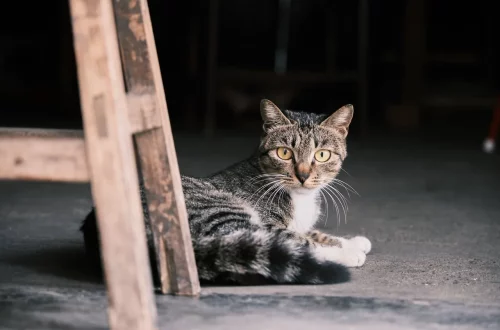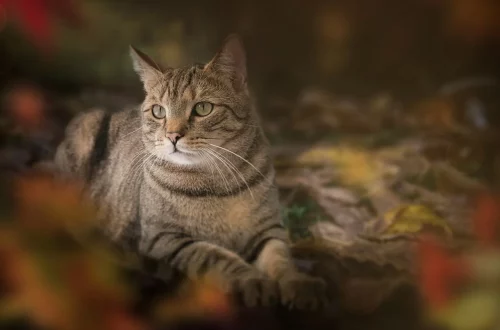
The Effectiveness of Using a Cat Squirt Bottle for Behavior Training
Training a cat can often feel like an uphill battle. Unlike dogs, felines are notoriously independent and often resistant to traditional training methods. While some cat owners may find success in using treats and toys to reinforce positive behaviors, others may seek alternative methods to deter unwanted actions. Among these methods, the use of a squirt bottle has gained popularity as a means of behavior modification. However, the effectiveness and ethical implications of this approach remain hotly debated among pet owners and animal behaviorists alike.
Cats are naturally curious creatures, and their instinctual behaviors can sometimes lead to challenges in a household environment. From climbing on countertops to scratching furniture, these actions can be frustrating for owners who want to maintain a harmonious living space. The squirt bottle, filled with water, has been proposed as a tool to discourage undesirable behaviors. When a cat engages in an unwanted action, a quick spray from the bottle is intended to startle them and redirect their focus.
However, it is essential to consider the potential consequences of this method. While some owners may report immediate results, others find that the squirt bottle can lead to fear-based responses or even increased anxiety in their pets. Understanding the nuances of cat behavior and the implications of using aversive training methods is crucial for any cat owner contemplating this approach.
Understanding Cat Behavior
To effectively train a cat, one must first understand their natural instincts and behaviors. Cats are creatures of habit, often following routines that suit their predatory nature. They are also highly territorial and may exhibit behaviors that seem disruptive, such as scratching or climbing. Recognizing these traits can help owners devise training strategies that align with their cat’s instincts rather than against them.
For instance, scratching is a natural behavior for cats, as it helps them keep their claws sharp and marks their territory. Instead of using a squirt bottle to deter this behavior, providing designated scratching posts can redirect their energy in a more positive manner. Similarly, climbing is instinctual; cats often seek high perches for safety and to survey their surroundings. Creating vertical spaces, like cat trees, can satisfy this need without resorting to punitive measures.
Furthermore, cats communicate through body language and vocalization. Understanding these signals can aid in recognizing when a cat is stressed or uncomfortable. If a squirt bottle is used inappropriately, it may lead to confusion and anxiety. For example, if a cat associates the water spray with their owner’s presence, they may begin to avoid the owner altogether.
Ultimately, a well-rounded understanding of feline behavior can foster a more effective training environment. Instead of relying on fear tactics, cat owners can cultivate positive interactions that enhance their relationship with their pets. This approach not only improves behavior but also promotes a more trusting and loving bond between cat and owner.
Alternatives to Aversive Training Methods
While the squirt bottle may seem like a quick fix for behavior modification, there are numerous alternatives that can yield more sustainable results without the potential negative consequences. Positive reinforcement training, for instance, has been shown to be a far more effective and humane approach to modifying behavior in cats.
Using treats or praise to reward desirable actions encourages a cat to repeat those behaviors. For example, if a cat uses its scratching post instead of the furniture, providing a treat or affection can reinforce that behavior. This method not only motivates the cat to continue the good behavior but also strengthens the bond between the pet and the owner.
Another alternative is environmental modification. This involves changing the cat’s environment to minimize unwanted behaviors. For instance, if a cat tends to jump on the kitchen counter, removing access by closing doors or using barriers can help. Additionally, providing alternative outlets for energy, such as interactive toys or scheduled play sessions, can keep a cat engaged and less likely to resort to undesirable actions.
Desensitization and counter-conditioning are also effective techniques. These methods involve gradually exposing the cat to the stimuli that trigger unwanted behaviors while rewarding calm responses. Over time, the cat learns to associate the previously negative stimulus with positive outcomes, leading to reduced anxiety and improved behavior.
These alternative methods may require more time and patience, but they ultimately lead to a more trusting relationship and a happier cat. By focusing on positive reinforcement and environmental adjustments, owners can effectively manage their cat’s behavior without the risk of causing fear or anxiety.
The Risks of Using a Squirt Bottle
Despite its popularity among some cat owners, using a squirt bottle as a training tool carries several risks that can have long-term implications for a cat’s emotional well-being. One of the primary concerns is that this method can lead to fear-based responses. When a cat is startled by a squirt of water, it may associate the unpleasant experience with the action it was performing at the time, but it can also generalize that fear to other situations.
For example, a cat that receives a squirt for climbing on the counter may start to avoid the kitchen altogether, fearing that it will be punished again. This avoidance behavior can extend to the owner as well, leading to a fractured relationship based on fear rather than trust.
Moreover, using a squirt bottle does not teach the cat what to do instead of the unwanted behavior. It simply punishes the action without providing a constructive alternative. As a result, the cat may become confused about what is acceptable behavior, leading to increased anxiety and stress. In the long run, this can result in behavioral issues that are more challenging to correct.
Additionally, the squirt bottle method fails to address the underlying causes of the unwanted behavior. Whether a cat is scratching, climbing, or exhibiting other behaviors, understanding the root cause is essential for effective training. Punishing the behavior without addressing the triggers can lead to ongoing issues and a cycle of frustration for both the cat and the owner.
In conclusion, while a squirt bottle may offer immediate results, the potential risks and negative impacts on a cat’s emotional health often outweigh the benefits. Owners are encouraged to explore more humane and effective training methods that nurture their cat’s well-being and strengthen their bond.
Creating a Positive Training Environment
To foster a successful training experience for both the cat and the owner, it’s vital to create a positive training environment. This involves not only the techniques used but also the overall atmosphere during training sessions.
Start by ensuring that the training sessions are short and engaging. Cats have relatively short attention spans, so keeping sessions brief can help maintain their interest. Incorporating play into training can also make the experience enjoyable. For instance, using a wand toy as a reward for following commands can encourage participation and enthusiasm.
Another important factor is consistency. Establishing a routine helps cats understand what is expected of them. If certain behaviors are discouraged, make sure the same message is conveyed consistently. This consistency not only aids in training but also fosters a sense of security for the cat.
Additionally, be mindful of the cat’s mood and energy levels. Training should be conducted when the cat is calm and receptive. If they are overly stimulated or agitated, it’s best to wait for a more suitable time. Recognizing when a cat is not in the mood can prevent frustration for both the owner and the pet.
Finally, patience is key. Training a cat takes time, and progress may be slow. Celebrate small victories and remain positive throughout the process. Building trust and rapport with a cat enhances the training experience and leads to long-lasting behavioral improvements.
In summary, creating a positive training environment involves engaging techniques, consistency, awareness of the cat’s needs, and a healthy dose of patience. These elements work together to foster a more productive and enjoyable training experience for both the cat and the owner.
In conclusion, while the squirt bottle may seem like a quick fix for unwanted cat behaviors, it often leads to fear and anxiety, undermining the bond between pet and owner. By understanding feline behavior and exploring humane alternatives, cat owners can create a positive training environment that enhances their relationship with their pets.
**Disclaimer:** This article is not intended as medical advice. For any health-related concerns regarding your pet, please consult a veterinarian.




